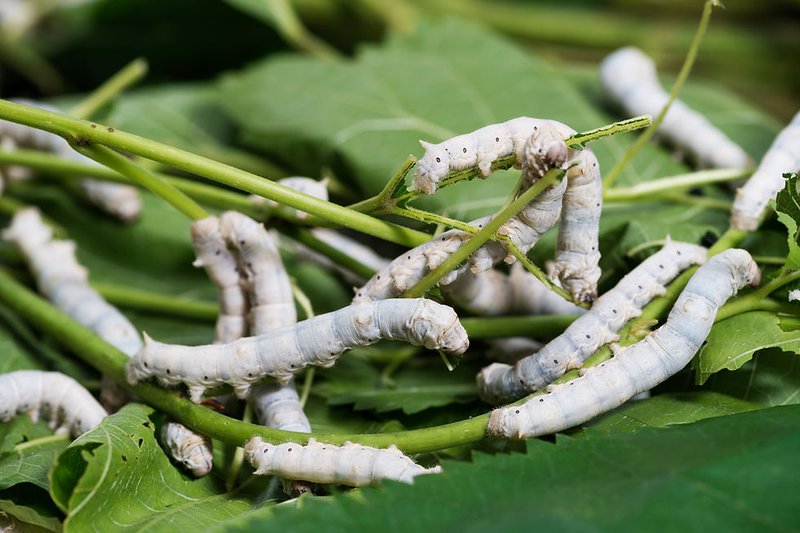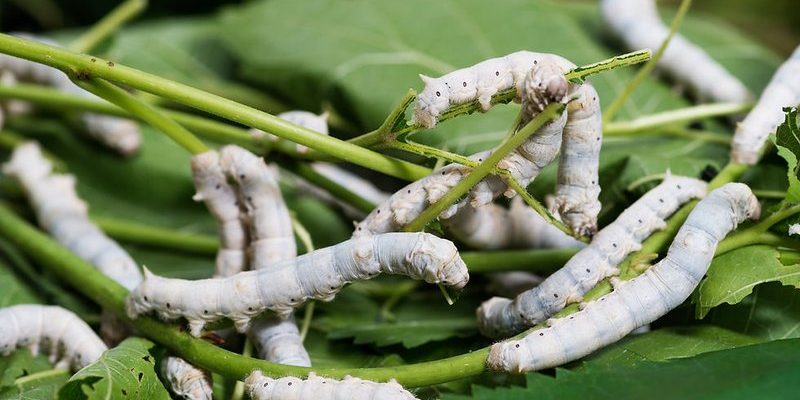
Imagine you’re at a lovely café, chatting about textiles. You might say, “Hey, did you know it can take around 2,500 to 3,000 silkworms to create a single gram of silk?” That’s a lot of caterpillars for a tiny bit of fabric! Understanding this process not only gives us a deeper appreciation for silk but also sheds light on the incredible life cycle of these little creatures and their role in our everyday lives.
So, buckle up as we explore the journey of silkworms and silk, and unravel some interesting facts along the way!
What Are Silkworms?
Silkworms, or *Bombyx mori*, are the larvae of a moth species that primarily feeds on mulberry leaves. They’re not just any caterpillars; they have a special talent for producing silk. These little guys undergo a fascinating transformation, starting as eggs and eventually becoming moths.
During their larval stage, which lasts around 25 to 30 days, silkworms grow rapidly. They eat and eat (and then eat some more), building the energy needed for their next big step—spinning cocoons. You might think of this stage as a caterpillar buffet, where they feast on the luscious mulberry leaves.
Once they’re ready, they spin their cocoons, made of a single thread of silk that can be hundreds of meters long. It’s pretty mind-blowing when you think about it—what’s just a small caterpillar can create something so magnificent!
The Silk Production Process
The journey from silkworm to silk is a meticulous process that takes time and care. After the silkworms have fully matured, they spin cocoons around themselves. This spinning creates silk threads through a process called sericulture.
Typically, each silkworm can produce about 1,000 meters of silk thread in its cocoon. However, to gather this silk, farmers need to harvest the cocoons. They usually do this before the moth has a chance to emerge. If the moth breaks free, it would ruin the long silk thread, making it unusable for fabric.
Once the cocoons are harvested, they are boiled to kill the pupa inside and to loosen the silk fibers. After that, the silk threads are carefully unwound and can be spun into yarn or woven into fabric. It’s a combination of art and science—one that has been refined for thousands of years!
How Many Silkworms for One Gram of Silk?
So, back to the burning question: how many silkworms does it take to create just one gram of silk? On average, you’ll need around 2,500 to 3,000 silkworms to achieve that. If that sounds like a lot, it’s because it is!
To give you a clearer picture, if we consider that each silkworm produces an average of roughly 1,000 meters of silk, the amount of raw silk from all those silkworms adds up. However, once the silk is processed and many threads are wound together, only a small amount—just one gram—results from their hard work.
This is why silk can sometimes feel so luxurious and pricey. You’re not just paying for a fabric; you’re supporting an intricate process that involves many silkworms and a lot of craftsmanship.
The Life Cycle of a Silkworm
The life of a silkworm is a remarkable journey filled with transformations. It all begins when a female moth lays eggs, which hatch into tiny larvae. These larvae, which we call silkworms, go through several stages, known as instars.
– Hatching: The eggs hatch into tiny silkworms that are ravenously hungry.
– Growth: They consume mulberry leaves and grow rapidly, shedding their skin multiple times to accommodate their size.
– Cocoon Stage: When they’re ready, they spin cocoons around themselves and enter the pupal stage.
Each phase of their life is crucial for producing silk. This entire cycle takes about six to eight weeks, culminating in the creation of silk. It’s a remarkable example of nature’s efficiency—turning simple leaves into a sought-after fabric.
The Impact of Silk Production on the Environment
While silk production is fascinating, it’s essential to consider its environmental impact. Silkworm farming can be resource-intensive, especially concerning water and land use. Furthermore, the boiling of cocoons means that baby moths are not allowed to emerge, which some animal rights advocates argue is cruel.
However, there are sustainable practices emerging in the industry. Some farmers are adopting more eco-friendly methods, like organic mulberry farming and ethical sericulture techniques. Consumers can also play a role by choosing products from brands that value sustainability and animal welfare.
It’s a balancing act. We love the feel of silk, but we must also think of the creatures behind it and the impact our choices have on the environment.
Alternatives to Traditional Silk
If the extensive silkworm process or concerns about environmental impact have you wondering about alternatives, you’re in luck! There are several options on the market these days. Here are a few you might consider:
- Mulberry Silk: This is the most common form of silk and comes straight from cultured silkworms.
- Bamboo Silk: Made from bamboo fibers, it’s often touted for its eco-friendliness and softness.
- Peace Silk: Also known as Ahimsa silk, this method allows the moth to emerge and live, making it a more animal-friendly option.
- Recycled Silk: Fabrics made from salvaged silk reduce waste while still giving you that luxurious feel.
These alternatives offer great options if you’re looking to wear something soft and stylish without the concerns tied to traditional silk production.
The Cultural Significance of Silk
Silk has held immense cultural value throughout history. In many cultures, it symbolizes luxury and wealth. Historically, silk was traded along the famous Silk Road, connecting East and West. It played a significant role in the economy and culture of countries like China, India, and Persia.
Today, silk still represents elegance and quality. Whether in fashion, art, or traditions, silk remains a beloved material worldwide. Understanding its history and production process enhances our appreciation not just for the fabric itself, but for the rich tapestry of human culture entwined with it.
In conclusion, the world of silkworms and silk is as intricate as the threads they produce. From the life cycle of these tiny creatures to the methods of silk production, there’s so much to learn. Next time you run your fingers over a silk scarf or slip into a silk blouse, remember the thousands of silkworms that helped create that luxurious feel. It’s not just about wearing something beautiful; it’s about appreciating the journey behind it!

